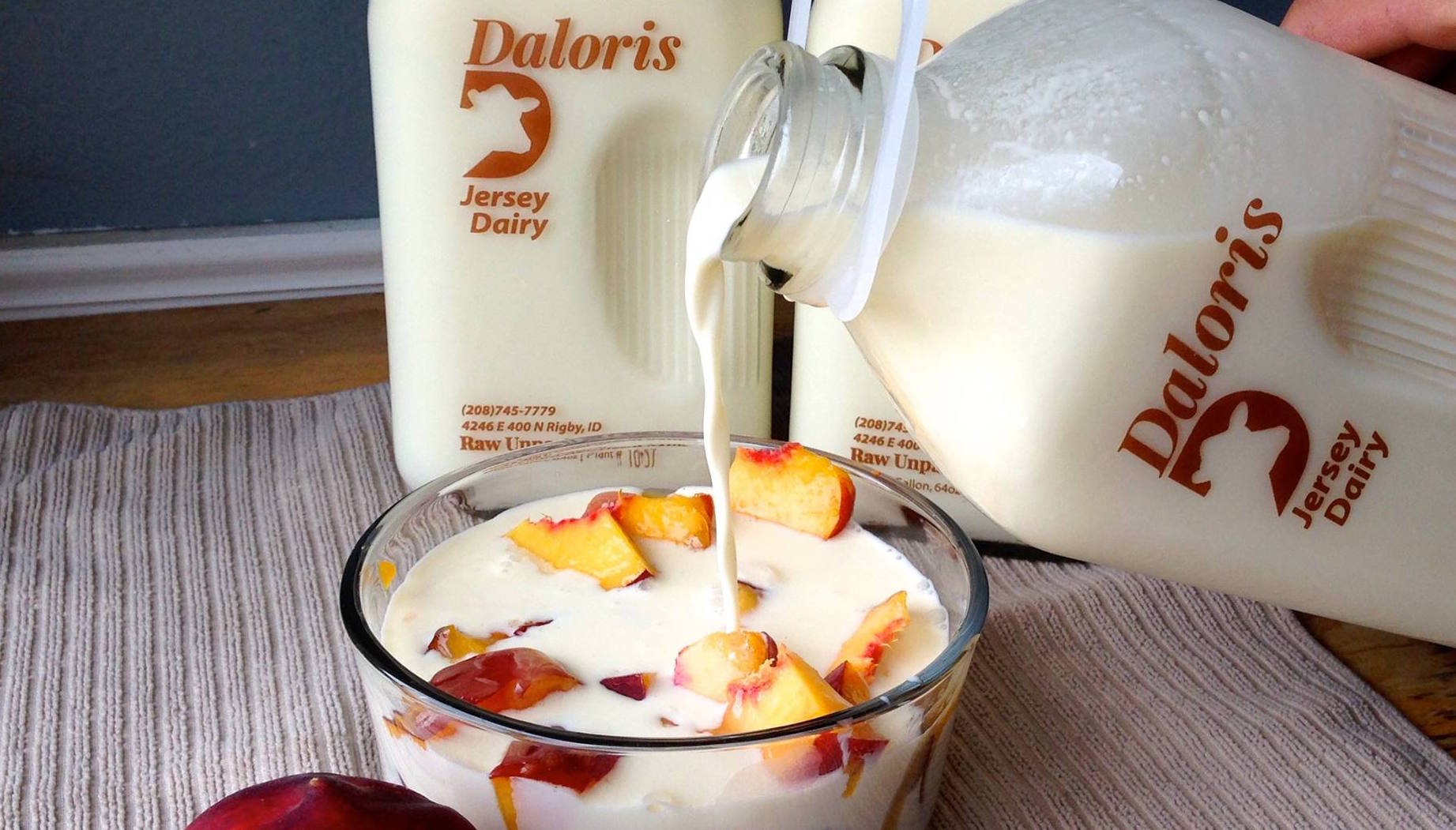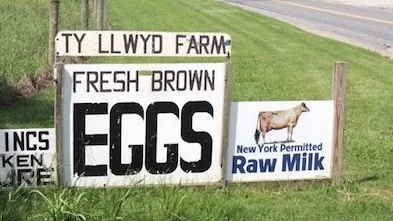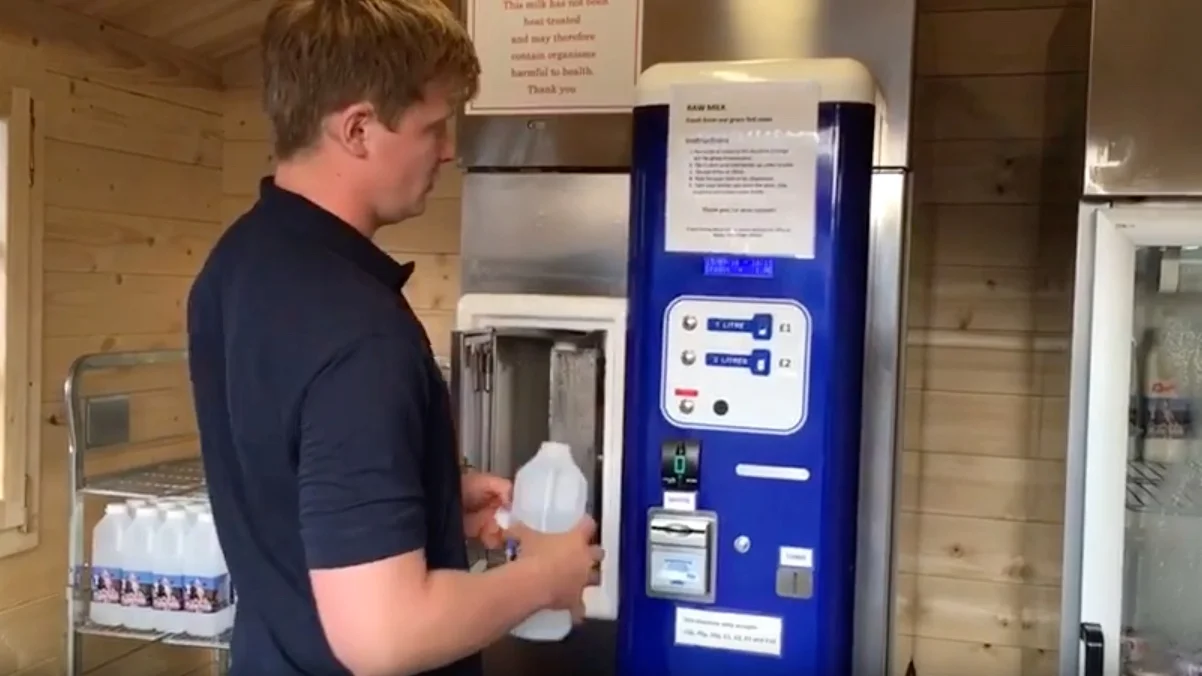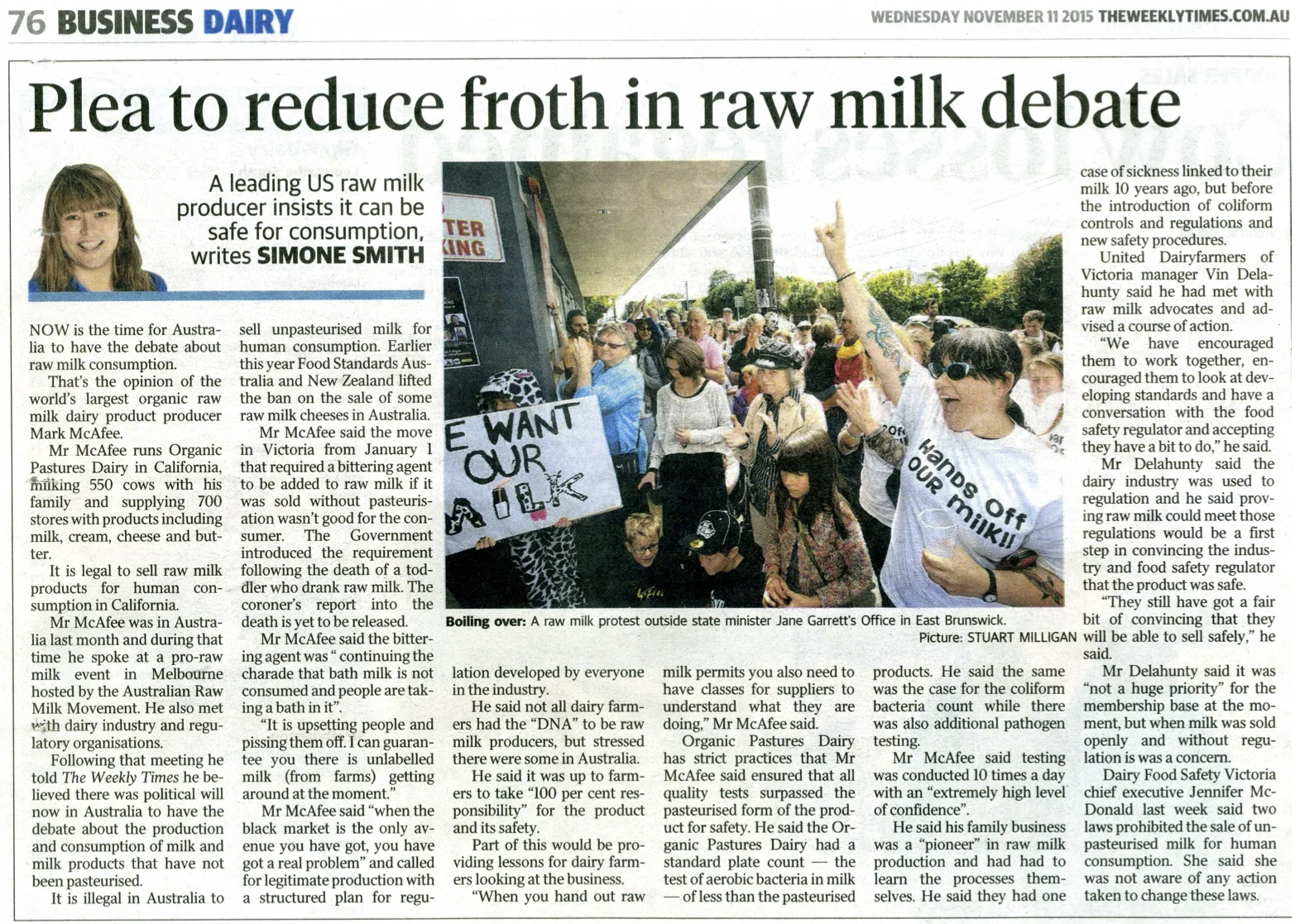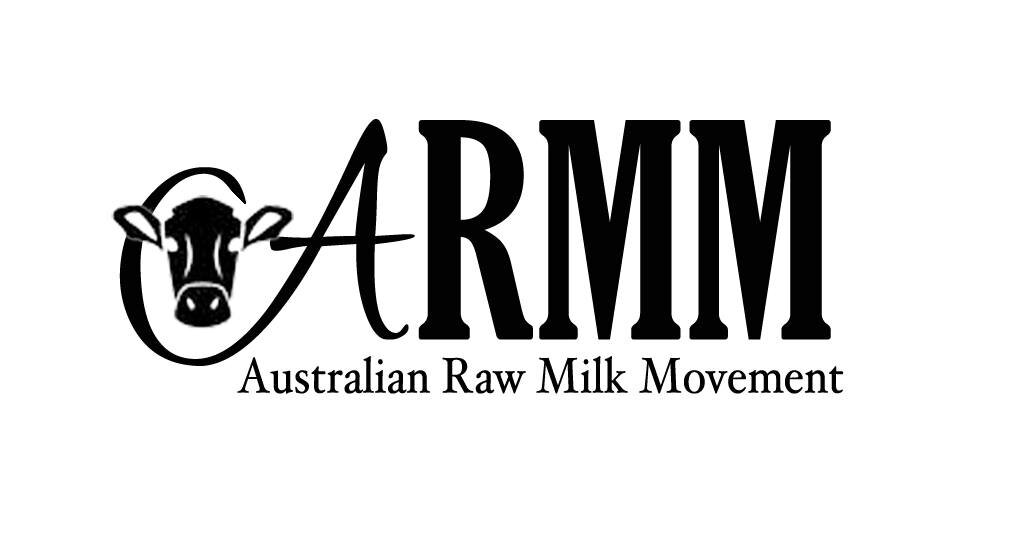

About ARMM
The Australian Raw Milk Movement Incorporated was formed in 2015.
We advocate for safe, regulated raw milk, produced exclusively for consumption as a wholesome unprocessed food.
Regulated raw milk should not be confused with commodity milk produced for dairy factories. Commodity milk is produced with the expectation that it will be pasteurised.
Around the world, people seek out and appreciate raw milk. It’s available in New Zealand, UK, and many states of the USA. It is widely available in Europe.
ARMM’s goal is a regulated raw milk industry, guided by existing State and Territory dairy food regulators. Cheese, butter, yogurt, and kefir can all be made from raw milk.
Australia’s cheesemakers have finally been allowed to make raw milk cheese, though few do. Did you know that New Zealand families can buy unlimited quantities of regulated raw milk for cheesemaking at home? And many New Zealand dairy farms sell regulated raw milk from vending machines, which are also common in Europe.
It’s time Australia caught up with the rest of the world. And with our past.
Back in the day
It is not widely known that for many decades, as pasteurisation became the norm, town milk supply licences were granted to qualifying raw milk producers. This regulated avenue for production and supply allowed thousands of health-conscious consumers to enjoy raw milk legally. But slowly these licences were phased out. The last town milk licences ran out in the early 1990s.
Yet many people still wanted to drink raw milk, and were happy to pay handsomely for the food they loved. The industry said no, and spread false information about its raw competitor. Making a good living by producing low risk, regulated raw milk is not permissible.
With strong demand but no supply, what happened next was predictable: a dairy farmer came up with a clever way of supplying raw milk: call it bath milk, and label it ‘not for human consumption.’ It sold well, while the regulators watched on.
After the tragic death of a child who might have drunk bath milk in 2014, Victoria compelled suppliers of bath milk to add a bittering agent, which brought sales to an abrupt end. That infamous new regulation was issued more than 18 months before the Coroner reported that, on the balance of probabilities, bath milk was the cause of death. You can read our comments on the Coroner’s report here.
Bath milk, and raw milk in other guises, became hard to get in other States, too. To the shock of many passionate raw milk consumers, well-managed herdshare schemes in South Australia and New South Wales were shut down, and the dairy farmers penalised. Some Queensland raw milk producers were fined.
Currently, the supply of raw milk for human consumption remains illegal across Australia. Bath milk is still sold in some places, but supplies are hardly secure. Another form of milk is pressure-treated and labelled as ‘raw’, but in our opinion it is not equivalent to regulated raw unprocessed milk.
Good science to the rescue
The science of risk assessment is evolving rapidly, which is why 2020 was a turning point for ARMM. We decided to test our understanding of raw milk. Our knowledge of well-managed raw milk operations in Australia over the years, and experience in other comparable countries, indicates that carefully regulated raw milk is a low-risk food.
But have we got that right? Modern science will provide the answer.
So, our goal in 2020 is to engage an international risk assessment expert to answer the question: How safe is properly regulated raw milk in Australia?
If scientific risk assessment endorses our position, we will call for action. With your help, and hard work by us all, ARMM will push for legalisation of regulated raw milk. Bath milk won’t be necessary. In its place, we want regulated raw milk, proudly labelled as such. Totally fit for human consumption. A superfood, in fact.
We are now accepting donations for this landmark project. Can you help with our Fundraiser?
Rebecca Freer
President
For more information on how to identify and manage risks on the farm see the 11 categories of the Risk Identification and Risk Reduction program:
